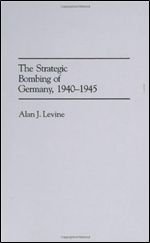The education of girls and women in early modern Europe varied widely according to social class and geographic location, just as it did for their male counterparts. Unquestionably, however, gender made a difference and families systematically favoured the education of their sons over that of their daughters. Amongst the rural and urban poor, who constituted the vast majority of the European population, school education generally was not an option, so that the poor at best received vocational training which rarely allowed forms of social mobility. Nonetheless, schools for the poor did multiply during the eighteenth and early nineteenth century, thanks in large part to religious associations and orders, and girls were not forgotten in this effort to bring religion to the masses. Wealthy families, on the other hand, saw other reasons to educate their daughters and this translated into forms of home education as well as the development of elite boarding schools mainly within urban areas. Access to learning was not just contingent on access to schools, however. In general, the growth of girls’ education depended a great deal on contemporary attitudes about the relationship of the sexes and on women’s place within society. Initiatives that favoured girls’ education were always buttressed by arguments about how this education would serve to create better, more pious families. Rarely, if ever, was girls’ education seen as a liberal right contributing to the development of the individual. For the entire period, then, girls’ education remained limited both in its scope and its ambitions.
Eighteenth-century debates about women’s place
It is well established that men and women have the same nature and the same constitution. The proof lies in that female savages are as robust, as agile as male savages: thus the weakness of our constitution and of our organs belongs definitely to our education, and is a consequence of the condition to which we have been assigned in society.9
The intellectual debates of the Enlightenment period included many discussions about the relationship of the sexes where the question of education often emerged, particularly when speaking about women. Although virtually everyone accepted that fundamental differences existed between men and women, more progressive thinkers emphasised how girls’ education or, more accurately, the lack of education accentuated these differences. In France many authors argued that providing a better, less frivolous education to women would contribute to regenerating French society. Among the earliest texts that denounced the state of women’s education was Francois Poulain de la Barre’s De regalite des deux sexes (On the Equality of the Sexes) in 1673 in which he argued essentially that the mind has no sex:
If women studied in universities alongside men or in other universities set aside for them in particular, they could take degrees and aspire to the titles of Doctor and Master in Theology, Medicine, and [canon or civil] Law. And their natural talents, which fits them so advantageously for learning would also suit them to be successful teachers.10
Shortly afterwards, the Englishwoman Mary Astell published her Serious Proposal to the Ladies (1694) that proposed the founding of a woman’s university for women who did not wish to marry. Later in the eighteenth century, Germany’s first woman medical doctor Dorothea Christina Leporin wrote Thorough Investigation of the Causes which Prevent the Female Sex from Studying (1742) in which she stated: ‘If one admits that the female sex is capable of learning then one must also admit that it has received a calling to go with it.’11 Most treatises remained relatively unspecific about what should be done to improve women’s education, although in France the Abbe de Saint Pierre in 1732 proposed a system of both boarding schools and free day schools for all girls between five and eighteen, while the pedagogue Riballier in 1785 urged the creation of public colleges (secondary schools) for girls watched over by the state; he argued that women’s ignorance was among the primary causes of the evils in contemporary society.12
While men dominated the intellectual debate, women’s voices were present in all European countries notably thanks to their role within an elite salon culture that thrived throughout the century and continued, along different lines, into the nineteenth century. Within French salons, women such as Mme de Geoffrin and Mme Suzanne Necker pursued their own educational agendas but also staked a claim for women’s right to be listened to and to play a special role in a civilising process that placed a special emphasis on polite conversation.13 The print revolution of the eighteenth century allowed women to gain greater prominence in public debate, notably in England and France where women writers, such as the English bluestocking, Lady Mary Wortley Montagu, championed female education and generally mixed politics. Eliza Haywood’s Female Spectator (1744-6) was frequently re-edited in book form and was credited with bringing learning into fashion. In France, the Journal des Dames (1759-78) adopted an increasingly non-conformist tone as Mme de Beaumer called for a ‘revolution’ in female consciousness that involved stretching women’s minds and range of activities; her successor Mme de Montaclos was more measured and maternalist in her writing, placing girls’ education for motherhood at the centre of many articles, while acknowledging that women should be allowed to pursue careers of their choice. These elite women writers and journalists were part of a genuinely European group of intellectuals who exchanged and translated ideas across national boundaries, developing an argument for granting women greater access to the tools of reason.14
In the debate about women’s place in society, Jean-Jacques Rousseau’s writings stand out, because of their enormous influence throughout Europe and their enduring success in the nineteenth century. In his pedagogical novel, Emile (1762), the French philosopher proposed a model for both boys’ and girls’ education that emphasised a respect for the natural inclinations of the sexes who should be allowed to mature without excessive discipline and social restraints. Writing partly in response to the pernicious public influence he attributed to aristocratic salon women, he argued that women’s place was within the family, while men exerted authority in public. As a result, Emile’s education emphasised autonomy, independence and self-control while Sophie’s education was aimed primarily at making her an agreeable and pleasing wife: ‘Thus the whole education of women ought to be relative to men. To please them, to be useful to them, to make themselves loved and honoured by them, to educate them when young’. This carefully circumscribed education was a response to the figure of the salon woman with her array of female artifices; Sophie was not to have access to abstract culture and to public life in general. At the same time the Genevan philosopher admired certain aspects of ‘natural’ womanhood, such as their presence of mind and their sensitive observations; women’s intelligence was practical and intuitive, complementing men’s more scientific and speculative reasoning. It followed from this vision of male/female capabilities that girls’ education needed to be carefully contained and directed toward women’s social role within the family. But within the family, Rousseau granted women unusual authority:
Woman’s empire is an empire of sweetness, dexterity and good-nature. . . She must reign in her house as a minister in his State, and ensure she is given orders to do what she desires. In this respect the best households are those where women have the most authority; but when she fails to recognise the voice of authority, and when she seeks to usurp her rights and command herself, disorder ensues that can only introduce misery, scandal and dishonour.15
Rousseau’s vision of women reigning within their household garnered increasing support throughout Europe in the nineteenth century, but also encountered ‘feminist’ opposition among both men and women who highlighted its limitations. Undoubtedly, the best known of these ‘feminist’ retorts is Mary Wollstonecraft’s Vindication of the Rights of Woman (1792) that eloquently argued for the need to provide women with a decent education and even advocated co-education:
If marriage be the cement of society, mankind should all be educated after the same model, or the intercourse of the sexes will never deserve the name of fellowship, nor will women ever fulfil the peculiar duties of their sex, till they become enlightened citizens, till they become free by being enable to earn their own subsistence, independent of men.16
During the French Revolution the concern to remake the social and political body spawned a great many debates about the relationship between the sexes and the education appropriate for the new man and woman. Revolutionaries were divided, however, about the biological basis for gender differences. While some educational proposals were very conservative, emphasising women’s ‘natural’ limitations, others revealed frankly feminist opinions. Most prominently, the philosopher Condorcet insisted in 1791 that ‘Education should be identical between men and women’; since men and women had the same rights, women should have the some opportunities as men to acquire reason.17 The German Theodor Gottlieb von Hippel defended similar ideas a year later in his stirring plea for extending French citizenship to women and for granting them opportunities in the public sphere:
It would have been preferable to have offered the honours of citizenship to the other sex and avoided ridicule in such a serious matter. . . Still less should women be forbidden from taking part in the inner administration and economy of the state.18
The egalitarian message of these more radical treatises was, however, a distinct minority among a chorus of voices who believed girls’ education needed to be improved, but that this education should respect the natural differences between men and women.
Schools for the poor: the influence of religious initiatives
The concern to improve girls’ education in the eighteenth century existed at the level of learned discourse, but it also translated into pedagogical practice within cities and rural communities. While the provision of schooling for the poor was patchy and often mediocre in quality, scholarship has revealed, nonetheless, a far more diverse range of institutions than has generally been acknowledged. Private rather than state initiatives fuelled the development of girls’ schools prior to the last half of the nineteenth century, with the exception of the German states where communities were required to maintain schools by the late eighteenth century. Throughout Europe, schools and training for poor girls reflected commonly shared assumptions: to begin with, schooling was generally not intended to promote social mobility, but rather to allow girls to internalise basically middle-class values of sobriety, modesty, diligence, and thrift. Second, schooling was expected to transmit a certain number of tools for functioning as a woman within society, notably reading and needlework. Finally, whether lessons involved moral behaviour or sewing, religious values permeated the experience of learning for both peasant and working-class girls.
In reaction to the Protestant Reformation, the Catholic Church responded through the creation of female religious orders dedicated to providing schooling for the young.19 A wide range of such orders emerged in the early modern period in England, France and Italy, many of which focused particular attention on the poor. These orders included the Ursulines, the Sisters of Charity (founded in 1633 by Louise de Marcillac and Saint Vincent de Paul), the Ladies of Saint-Maur or the Sisters of Saint-Charles. The structure of these orders allowed them to spread throughout Catholic areas, frequently offering a range of services: free schools for the poor, boarding schools for the wealthy, as well as health care for the impoverished. In cities, the cathedral also operated fee-paying schools: in Paris prior to the Revolution, schools existed for one-third of the female school-age population, undoubtedly a high in eighteenth-century Europe.20 Schools for the poor spread throughout cities and rural areas offering primarily lessons in reading, religion and needlework. In France, where these orders were the most numerous, reading was conducted primarily in French not Latin, but everywhere religion formed the cornerstone of girls’ education. Writing in 1716 to a mother superior concerning the opening of a girls’ school, a French priest noted ‘I do not mention catechism and Christian subjects because, these as you know, must take priority over everything else.’21
In England, Scotland and Wales, charity schools for boys and girls began to spread almost a century after France, thanks to the efforts of the Society for the Propagation of Christian Knowledge (founded in 1699); by the mid-eighteenth century, Quakers and Unitarians were also active in setting up both fee-paying and free schools. The curriculum proposed for girls was rudimentary and emphasised the inculcation of religious values as well as the acquiring of domestic skills. Character formation played a central role in this education, which recent scholarship suggests lasted an average of some three and a half years. Writing in 1805, Catherine Cappe argued: ‘cultivation of social and pious affections, gentleness of temper and resignation to the will of God [were] as important to the female character in the lowest as well as the highest forms of life’.22 Unlike in France, however, English charity schools also were expected to help a girl find a trade, notably in domestic service. By 1733 it is estimated there were some 20,000 students in charity schools throughout the country. Alongside these schools, girls also had access to village and dame schools as well as Sunday schools which all sought to rescue the lower classes ‘from pressure of extreme want, the risk of ill-usage, and the wretchedness of vice’.23 Middle-class suspicion concerning the moral character of working-class families undoubtedly contributed to the development of schools where girls were removed, albeit temporarily, from their family’s bad influence. Where schools existed for lower-class girls in other European countries, the same patterns can be found: girls received lessons first and foremost in religion, followed closely by practical training in needlework.
Elementary education was undoubtedly most developed within the German states thanks to the combined influence of Enlightenment ideals, Pietism and official ordinances. By the 1770s and 1780s both Protestant and Catholic areas had incorporated compulsory education for both boys and girls into their rapidly expanding bureaucracies. The acceptance of co-education within Protestant areas, in particular, expanded the school offerings available for girls. The content of education within
German schools resembled popular programmes elsewhere, although by 1800 German schools tended to offer a somewhat greater variety of subjects that included singing and in some areas ‘arts and sciences’.
Literacy rates for women highlight the contrasts that existed within Europe and point to the educational advance of countries in northern Europe. Throughout Europe, women’s literacy rates were far lower than those of men, reflecting the unequal provision of schooling for boys and girls. The highest literacy rates are found in Germany where at the end of the century 95 per cent of men could sign their name and 68 per cent of women. In England female literacy in 1800 is estimated at around 45 per cent, with male literacy at around 61 per cent; in France female literacy in 1786-90 is estimated at 27 per cent (male literacy at 47 per cent), with wide discrepancies between northern and southern France. Mediterranean countries lagged far behind: in Greece, for example, male literacy in 1831 was only at 9 per cent, and women were almost universally illiterate.24 Literacy rates are only a crude measure of educational levels, and they vary tremendously according to region, social class and gender; at the end of the eighteenth century these rates were probably the highest in Calvinist Geneva where cultural support for girls’ education was exceptionally strong. Throughout Europe, however, support for poor girls’ schooling always came second to that for their brothers, and this scarcely changed when one turns to examine attitudes toward middle - and upper-class girls’ education.
Learned ladies and elite institutions
Traditionally, historians of education have depicted eighteenth - and early nineteenth-century girls’ schools in very negative terms. While poor girls learned primarily how to pray and sew, daughters of the elite are portrayed acquiring mainly frivolous accomplishments. Early modern women schoolteachers have been described as incompetent and unqualified amateurs, whose concerns were more financial than educational, while in Catholic countries, historians have often presented religious teachers as agents of ideological control. Recent studies by Carol Gold, Susan Skedd, myself and others, however, have begun to nuance such judgements through analyses that look more closely at the teachers who opened schools and the curricula proposed. The result is the discovery of a complex variety of institutions and, above all, the realisation that managing girls’ schools provided many middle-class women with working experience, either alone or with family members, an experience that has not been sufficiently acknowledged in histories of women’s work. As with poor girls’ schooling, the interest in improving girls’ education that existed in Enlightenment circles also translated into initiatives for the wealthy, despite the fact that their home environment offered fewer dangers. While the middle and upper classes generally provided lessons to their daughters within their homes, they frequently turned to schools to finish their daughters’ education.
In Europe, most middle-class institutions for girls were small privately run structures where, for a fee, girls were given lessons in a relatively wide range of subjects: literature, history, geography, some natural sciences, foreign languages (but generally not Latin and Greek), religion as well as the indispensable female accomplishments, such as sewing, embroidery, painting and music. Prior to state involvement, these institutions were run by individual proprietors, often family members, by religious orders, particularly in Catholic countries, by trustees, and even at times by parents, such as at the Dottreskolen academy for girls in Copenhagen, and their longevity depended a great deal on individual ingenuity and economic resources. Many of these schools offered a mediocre education at best, but there are examples in many European countries of institutions or women educators who took advantage of contemporary debates about the need to improve girls’ education and opened schools that offered a rigorous curriculum, divided into classes of ability. The professed goal of these schools was generally to produce good wives and mothers, but by the early nineteenth century there is evidence that some women headmistresses held more ambitious views and created schools that increasingly prepared their pupils for lives beyond the home.
Within Catholic countries convent schools provided the basic model for elite girls’ education. The same orders that opened free schools for the poor generally ran boarding schools as well for the wealthy, and a certain number increasingly gained a reputation for specialising in the education of an elite. The Ursulines and the Congregation de Notre-Dame, for example, were considered among the more learned religious orders; they organised their pupils into classes of ability and taught a range of subject matters that would allow their students not only to be efficient housewives, but also to be conversant within polite society. In 1800 the Society of the Sacred Heart was founded in France and quickly established a reputation for its upper-class boarding schools that opened throughout Europe and in the colonies.
In Britain a wide range of schools existed for the middle and upper classes although few welcomed as many students as the average Catholic convent school. The curriculum within these schools varied as well, but the better institutions offered at times an adventurous curriculum. An advertisement for Mrs Florian’s boarding school in Leytonshire ran thus:
The elements of Geometry and Trigonometry are also taught as far is requisite for a perfect intelligence of the principles of Astronomy, of the geographical knowledge of our globe and of Natural Philosophy, which are illustrated by experiments and machines. The young ladies enter at the same time on a complete course of universal history and geography, ancient and modern (according for Mr. Florian’s Chronological Views). Each epoch of history is illustrated by a geographical map, made by the pupil’s themselves.25
While most schools focused on the elegant accomplishments, two in Oxfordshire in the 1760s and 1770s offered more housewifely lessons in pickling, preserving and pastry-making as well as general English, French and needlework.26 By the late eighteenth century, a rising market for pedagogical treatises allowed women such as Hannah More and Mary Wollstonecraft, who also both ran schools, to advertise their teaching methods and to contribute to the support for more developed girls’ instruction.
This same concern for providing more serious education is also evident in the northern European countries where both lay and religious women opened schools and developed pedagogical blueprints. In turn-of-the-century Copenhagen, a range of private academies provided education to girls whose families came not only from the Danish court but also from the more humble artisanal trades. The most progressive of these schools was the Dottreskolen academy (founded in 1791), which aimed to offer girls a more scientific education with men teaching most of the more academic classes. Clearly, the concern here was to train girls who could help their husbands in commercial business. Finally, the Dutch headmistress Anna Barbara Van Meerten-Schilperoort (1778-1853) established a school in Gouda that served as a model for other institutions.
In Germany, more serious girls’ schools also developed during this period. Betty Gleim, for example, opened a school in Bremen in 1806, believing that only a new system of education would reform society. In addition to advocating serious academic education, she also encouraged professional training for women, modelled on a school for female teachers that the Swiss pedagogue Pestalozzi had founded at Yverdon. Her treatise Erziehung und Untericht des weiblichen Geschlechts (1810) (Education and Cultivation of the Female Sex) emphasised that the ideal of Bildung should apply to boys and girls; this text went on to become an important document for German-speaking feminists who used it to argue for vocational opportunities for unmarried women. Amalia Holst was another woman proprietor of a small school near Hamburg, whose writings emphasised women’s need for a more academic education. She began her 1802 treatise, Uber die Bestimmung des Weibes zur Hohern Geistesbildung (On the Capacity of Women for Higher Education) with the question ‘Are we only here for the sake of men?’ and went on to argue that intellectual selfdevelopment and maternal duty were not conflicting goals. In Berlin the Luisenstiftung (1811) offered general education for middle-class girls and enjoyed a high reputation.
Although schools for wealthy girls appeared in all European countries, two French institutions stand out for their cultural ambition and their influence in the eighteenth and early nineteenth century: the French school for noblewomen at Saint-Cyr and the schools for the Legion of Honour. Madame de Maintenon founded the school at Saint-Cyr in 1686 to educate 250 girls from impoverished noble families. Following the precepts of Fenelon’s major educational treatise, De l’education des filles (1686), she proposed a curriculum that offered women sufficient knowledge to be able to run noble households, including history, literature, Latin, music, painting and, of course, religion. Above all, however, her institution was explicitly intended to form girls who would provoke reform within their noble families, thanks to the Christian education they had received. Pupils were divided into four classes distinguished by the colour of their belts, and the curriculum was theoretically progressive.27 Although the reputation of the school declined over the eighteenth century, it nonetheless fostered many imitations, such as the Smolny Institute for noble girls in Saint Petersburg, Russia. The latter was founded in 1764 by Catherine the Great and remained in existence until 1917. In Austria the state supported advanced education for the daughters of officers and civil servants in two institutions that date back to the end of the eighteenth century: the Offizierstochter-Erziehungs-Institut (1775) and the Zivil-Madchen-Pensionat (1786) that prepared girls for careers as governesses; in 1805 in Augsburg Germany the Anna Barbara von Stetten Institute provided dowries for the students who came from the middle and lower classes.
The schools of the Legion of Honour followed in the footsteps of Saint-Cyr. Napoleon I created the schools in the early 1800s in order to provide a serious education for the daughters of his military officers and civil servants. These boarding schools provided free education to some 500 students whose social background ranged from the daughters of generals to the orphans of foot soldiers. The Emperor saw these institutions as a means of cementing support for his regime but also regenerating postrevolutionary society: ‘I will not restrict myself to raising a small number of girls. . . I will educate four to five hundred girls or none at all, and I will reform society.’28 Ostensibly the schools’ pedagogical objectives were limited, reflecting Napoleon’s distrust of learned women:
What will be taught to the demoiselles who will be brought up at Ecouen? We must begin with religion in all its rigor; in this matter do not admit any modification. In a public institution for demoiselles, religion is a serious matter; whatever else may be said about it, it is the surest guarantee for mothers and for husbands. Make believers of them, not reasoners. The weakness of women’s brains, the flightiness of their ideas, their destination in the social order, the necessity for inspiring them with a constant and perpetual resignation and a mild and indulgent charity, all that cannot be obtained except by means of religion, a charitable and mild religion.29
But the woman he hired to run the first school at Ecouen, Jeanne Campan, had very different ideas and these ultimately won out within the classroom, just as her pedagogical writings spread far beyond the borders of France. Her students studied literature, ancient, sacred and French history, geography and geometry, a smattering of natural sciences (especially botany), in addition to more feminine lessons in sewing, hygiene and cooking. This plan of study differed from the better ancien regime convent schools in the time allotted for literature, geometry and the sciences. Campan’s private writings reveal, moreover, that she envisioned her school in Ecouen as a ‘university of women’ and she had ambitious plans to position it at the centre of a vast network of girls’ schools in France. Although these plans did not come to fruition, many students of the Legion of Honour went on to active careers, rather than devoting themselves to home life.
Naturally, institutions such as that of Mme Campan were unusual in the first half of the nineteenth century, but they existed, attracted students, provoked discussion and spawned imitations elsewhere in Europe, such as the boarding school of St Annunziata for elite Italian girls in Florence in 1825. The educational reformers of the second half of the century tended to downplay the significance of such predecessors whose legacy, nonetheless, is obvious in the development of later ‘reformed’ schools. In effect, we as historians have often been guilty of reading our feminist foremother’s narratives too uncritically. In their concern to position their initiatives as new and ground-breaking they often neglected evidence that girls’ education was not universally mediocre. The seeds for rethinking the purpose of girls’ education were undoubtedly planted in the early modern period but they would only flower over the course of the nineteenth century.




 World History
World History









